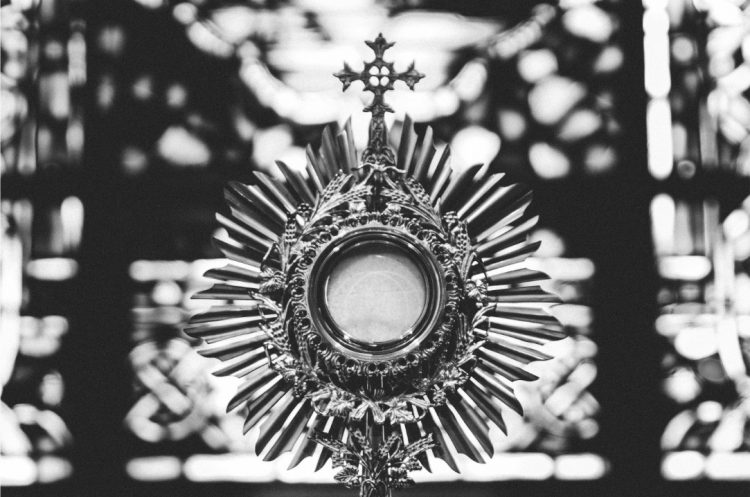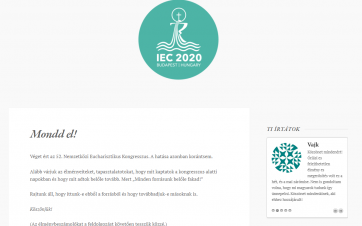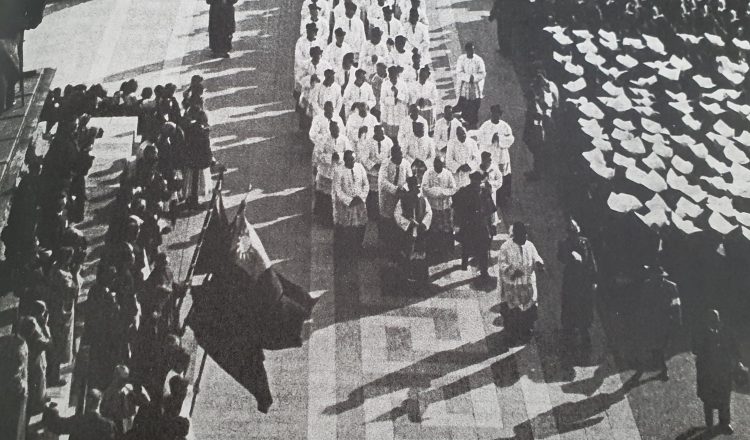
All eyes were on Budapest

Bell sounds were echoing on that late afternoon 82 years ago, when the priesthood’s procession hit the road from the nearby Vajdahunyad Castle towards Heroes Square. The clergy’s ceremonial procession was led by seminarians, lined up in a row of four, in white surplices, and fingers crossed. They were followed by congregations, white clergy, canons, abbots, provosts, while behind them walked 190 bishops and 37 archbishops to the site of the Opening Ceremony. Finally appeared the Cardinals, headed by the host of the Congress, Prince-Archbishop Jusztinian Serédi.
The trombone sounded! The fanfares signalled that Cardinal Eugenio Pacelli, Papal Legate had also started his move. Worshippers, on bended knees, greeted the papal nuncio and the papal blessings he conveyed.
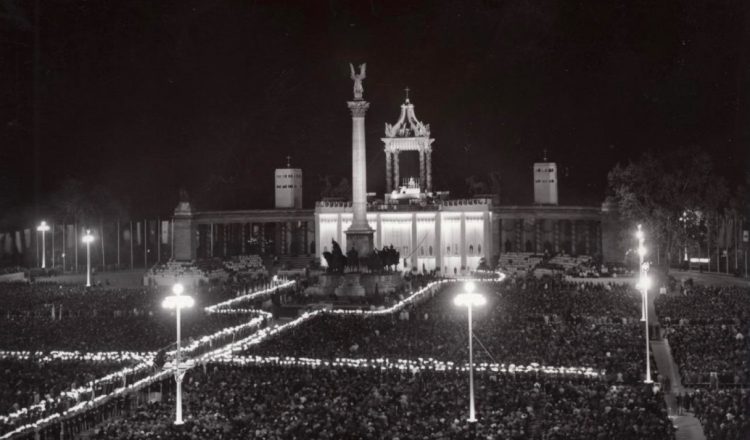
A celebration with sinister shadows
In the tensed historical situation of the time, the Catholic World Event had a particular significance. The Congress preparation had been shadowed by the Anschluss, when in the spring of 1938 the troops of the Nazi Germany invaded, then forcible united Austria to Germany. Hitler’s politics –as well as the communist ideology – had been strongly disapproved many times by the Vatican itself. The German political leadership was frowned upon the faithful’s attendance at the Catholic World Meeting. Officially there were talks about visa issuance malfunction, in fact, participation of German and Austrian worshippers at the Eucharistic celebration was subject to a separate travel authorization, de facto travelling was forbidden.
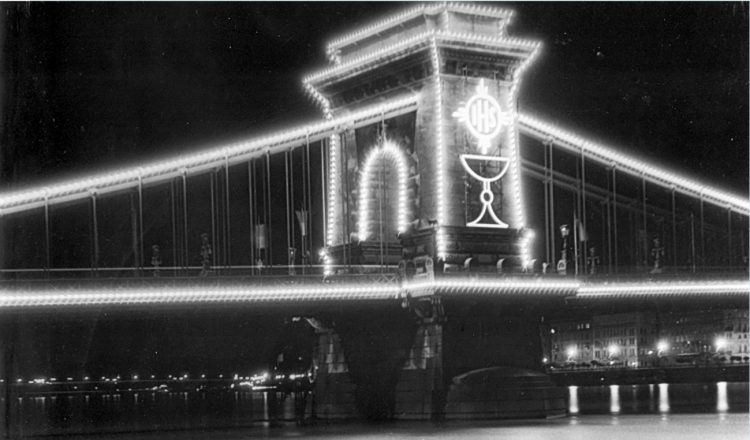
The cooperation
Still, what was the secret of the 1938 Congress success? The perfect organisation, the sound spiritual preparation and the national unity that backed the Congress. Challenges, there were plenty of. Accommodation had to be provided for a hundred thousand participants at least, but barely a ten thousand lodging possibilities were available in hotels and pensions. Pilgrim accommodations for groups were established, while 37 thousands of lodgings were offered to the guests by residents of Budapest.
All these overnight possibilities were checked one by one by the Organising Committee’s staff.
Professional organisation
Scouts carried out a huge mission and they really did a great job. They set up Guest Caring Offices at the railway stations, where pilgrims were greeted, directed and supplied with information. MÁV (The National
Railway System) –despite its limited vehicle capacity- managed to ensure the smooth travelling of 50 thousand passengers, as well as the reception of 70 special trains arriving from abroad. The scouts also issued close to 900 thousand printed information materials both on the programs and on the transport options.
Far away from politics
The Hungarian politicians, also upon the Holy See’s request, showed restraint, thus the event had not been used neither for promoting their own political party nor for voicing any revision objectives. Both the leftists, the social democrats and even the trade union leaders denoted of not blocking in any way the participation of the factory workers. To the organisers’ greatest surprise even factory staff showed interest and a huge demand for the group conferences. 2600 people of the Ganz Electrical Works’ staff participated in the preparation. The Factory Management supported the attendees with 15 thousand tram tickets, 3000 song booklets while purchasing 3000 Congress badges.
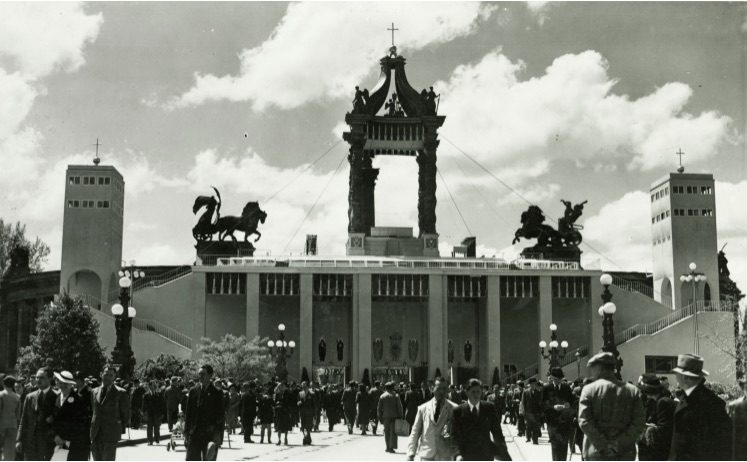
Past and Future
Impressive interest was expressed for the cultural and liturgical events of the Congress. The whole world admired Hungary on what a talented way the country could demonstrate its thousand years of tradition, history, while presenting the latest inventions, solutions of the time in the field of sound system, traffic organisation, and of mass communication, not to mention the celebrations’ visual technology. The Sundays Closing Holy Mass was even more extraordinary. Worshippers were steadily rolling during 4.5 hours so to attend on it. A procession threading in a thousand colours, clergymen, secular people, aristocrats, noblemen, ordinary civilians, all of them together so to make a testimony on their faith. The successful world congress represented a great reinforcement for the Hungarian Catholic Church, which they could draw strength from,
along with the faithful, during the dark decades that followed the year of 1938.
Photo: Fortepan
Source: IEC Secretariat
